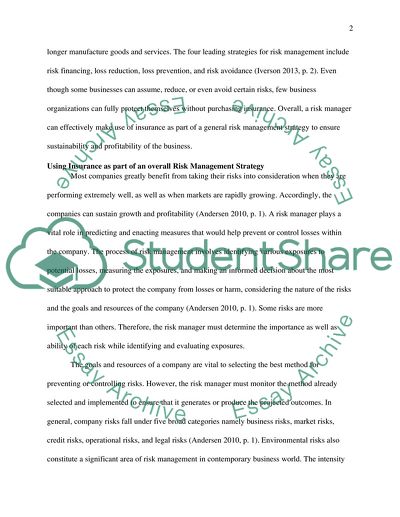Cite this document
(“Explain in detail how a risk manager can make optimal use of insurance Essay”, n.d.)
Retrieved from https://studentshare.org/finance-accounting/1668073-explain-in-detail-how-a-risk-manager-can-make-optimal-use-of-insurance-as-part-of-an-overall-risk-management-strategy
Retrieved from https://studentshare.org/finance-accounting/1668073-explain-in-detail-how-a-risk-manager-can-make-optimal-use-of-insurance-as-part-of-an-overall-risk-management-strategy
(Explain in Detail How a Risk Manager Can Make Optimal Use of Insurance Essay)
https://studentshare.org/finance-accounting/1668073-explain-in-detail-how-a-risk-manager-can-make-optimal-use-of-insurance-as-part-of-an-overall-risk-management-strategy.
https://studentshare.org/finance-accounting/1668073-explain-in-detail-how-a-risk-manager-can-make-optimal-use-of-insurance-as-part-of-an-overall-risk-management-strategy.
“Explain in Detail How a Risk Manager Can Make Optimal Use of Insurance Essay”, n.d. https://studentshare.org/finance-accounting/1668073-explain-in-detail-how-a-risk-manager-can-make-optimal-use-of-insurance-as-part-of-an-overall-risk-management-strategy.


